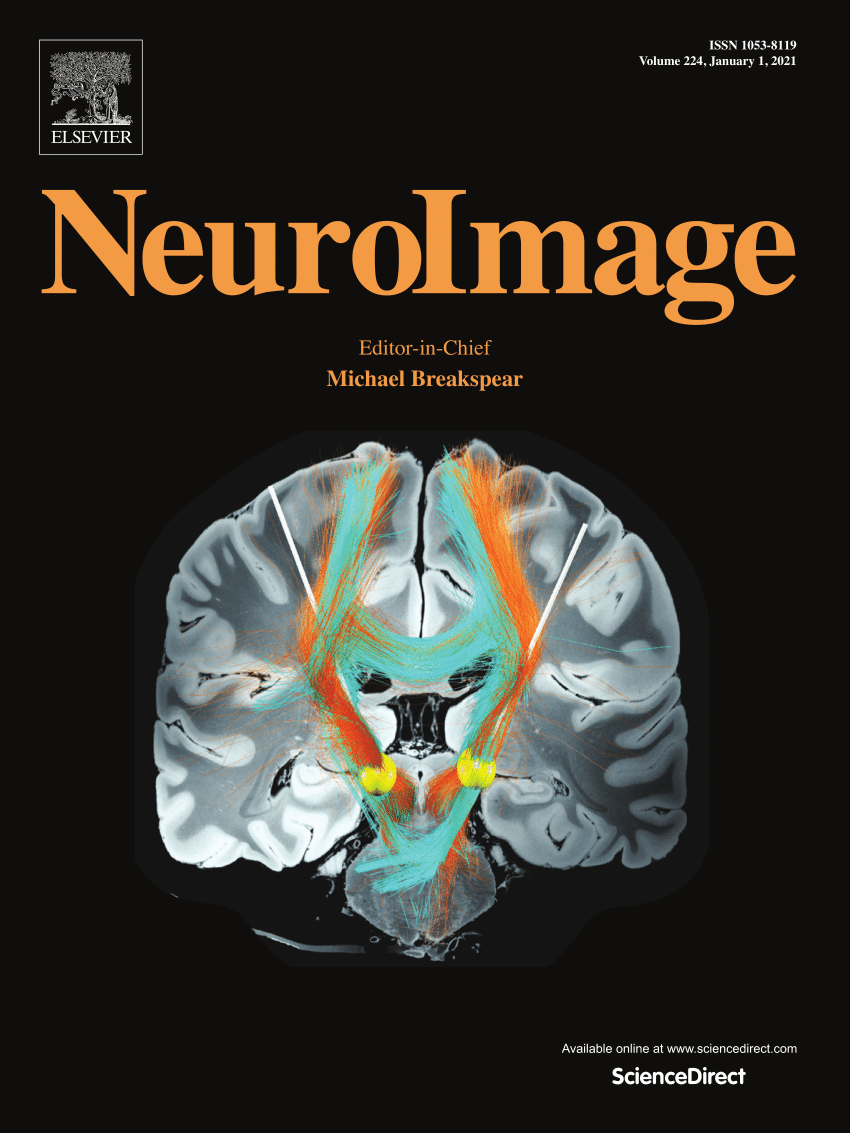通过同时评估人体动脉、毛细血管和神经元的激活来量化神经血管耦合:多模式 EEG-fNIRS-TCD 研究。
IF 4.7
2区 医学
Q1 NEUROIMAGING
引用次数: 0
摘要
研究背景这项研究探索了一种新颖的多模态神经成像方法,利用脑电图(EEG)、功能性近红外光谱(fNIRS)和经颅多普勒超声(TCD)来评估人类的神经血管耦合(NVC):15 名参与者(9 名女性;年龄 19-32 岁)在完成运动(手指敲击)和视觉("沃尔多在哪里?")任务时同时完成了脑电图-fNIRS-TCD 成像,并同步监测了血压、血氧饱和度和心率。fNIRS 评估了额叶、运动、顶叶和枕叶皮层内的微血管氧饱和度,同时使用 TCD 对大脑中动脉和后动脉(MCA/PCA)进行了电刺激。根据 10-20 系统设置了 16 通道脑电图。Wilcoxon 符号秩检验用于比较任务活跃期和静止期的生理反应,而零脚交叉相关检验则用于比较两项任务中的大脑和全身血液动力学反应:结果:时频分析表明,在手指敲击过程中,C3/C4电极上的α和低β波段功率降低(p结论:这项研究证明了 "α和低β波段功率 "疗法的可行性:这项研究证明了提议的脑电图-fNIRS-TCD 反应全面评估人体内 NVC 反应的可行性,特别是量化神经元激活(脑电图)、微血管氧合变化(fNIRS)和导管动脉速度变化(TCD)之间的实时时间同步性。本文章由计算机程序翻译,如有差异,请以英文原文为准。
Quantifying neurovascular coupling through a concurrent assessment of arterial, capillary, and neuronal activation in humans: A multimodal EEG-fNIRS-TCD investigation
Background
This study explored a novel multimodal neuroimaging approach to assess neurovascular coupling (NVC) in humans using electroencephalography (EEG), functional near-infrared spectroscopy (fNIRS), and transcranial Doppler ultrasound (TCD).
Methods
Fifteen participants (nine females; age 19–32) completed concurrent EEG-fNIRS-TCD imaging during motor (finger tapping) and visual (“Where's Waldo?”) tasks, with synchronized monitoring of blood pressure, capnography, and heart rate. fNIRS assessed microvascular oxygenation within the frontal, motor, parietal, and occipital cortices, while the middle and posterior cerebral arteries (MCA/PCA) were insonated using TCD. A 16-channel EEG set-up was placed according to the 10–20 system. Wilcoxon signed-rank tests were used to compare physiological responses between the active and resting phases of the tasks, while cross-correlations with zero legs compared cerebral and systemic hemodynamic responses across both tasks.
Results
Time-frequency analysis demonstrated a reduction in alpha and low beta band power in electrodes C3/C4 during finger tapping (p < 0.045) and all electrodes during the Waldo task (all p < 0.001). During Waldo, cross-correlation analysis demonstrated the change in oxygenated hemoglobin and cerebral blood velocity had a moderate-to-strong negative correlation with systemic physiological influences, highlighting the measured change resulted from neuronal input. Deoxygenated hemoglobin displayed the greatest negative cross-correlation with the MCA/PCA within the motor cortices and visual during the motor and visual tasks, respectively (range:0.54, -0.82).
Conclusions
This investigation demonstrated the feasibility of the proposed EEG-fNIRS-TCD response to comprehensively assess the NVC response within human, specifically quantifying the real-time temporal synchrony between neuronal activation (EEG), microvascular oxygenation changes (fNIRS), and conduit artery velocity alterations (TCD).
求助全文
通过发布文献求助,成功后即可免费获取论文全文。
去求助
来源期刊

NeuroImage
医学-核医学
CiteScore
11.30
自引率
10.50%
发文量
809
审稿时长
63 days
期刊介绍:
NeuroImage, a Journal of Brain Function provides a vehicle for communicating important advances in acquiring, analyzing, and modelling neuroimaging data and in applying these techniques to the study of structure-function and brain-behavior relationships. Though the emphasis is on the macroscopic level of human brain organization, meso-and microscopic neuroimaging across all species will be considered if informative for understanding the aforementioned relationships.
 求助内容:
求助内容: 应助结果提醒方式:
应助结果提醒方式:


